How would you define a historian?
Well, to call oneself a historian in the truest sense of the word, one needs to understand history as a subject, and that calls for deep research, not merely skimming the surface. History is a subject and therefore one needs to equip oneself with the pertinent knowledge, methodically.
When did you discover your own love for history?
Even back in my eighth grade, I was very clear. I really liked history as a subject. I had amazing teachers and the syllabus was very good. When I was in the tenth standard, as a family we visited Halebid, Belur and Srirangam. When I saw the architecture and sculptures of these temples, I decided that this would be it. I was interested in ancient history as a whole. Observing my seriousness in wanting to pursue history, Mrs Y G Parthasarathy (Founder and Dean, PSBB Group of Institutions) was kind enough to even create a pure arts group for me in the eleventh standard! It comprised of English, History, Economics, Sanskrit and Commerce. I am always grateful to her for this. Though the teachers had a tough time accommodating my time-table, they did it for me! Those were the best years of my life. Yes, being a temple-historian is extremely tiring, even days after your visit. The conditions are not conducive. We have to climb up a lot, for instance, in places like Badami. But passion keeps us going.
Have you ever felt insecure because of the generic perception that society has about history being a not so marketable career? Has this perception ever deterred your own passion for the subject?
It is true that people have a particular opinion about history. Historians or students of history don’t have too many avenues, except for taking up teaching full-time. This is indeed saddening, for a country that is so rich in history. The syllabus is also to blame. Instead of taking a student through a graded manner, initially exposing him/her to large portions of local history, then national history and eventually world history, the reverse is being done. So the student cannot relate to his surroundings or value his own roots. Hence, there is not much demand for historians. Whether in teaching or in museums or at organisations like the Archaeological Survey of India (ASI), opportunities are very limited. Personally, since I did not want to be a full-time teacher, I took up research. Slowly, I started giving public lectures and started getting invitations to associate myself with heritage tours, and to teach as a guest faculty in institutions, which offered me flexibility to teach, travel and research.
I was constantly taunted for taking up history (which people associated with dullheads), for not going abroad, for not taking-up a full-time job… In fact, many people thought I wasn’t doing anything and was jobless! I was always judged by their yardsticks and did not fit into the stereotype. Of course, unconventional professions are now being accepted. But this wasn’t the case twenty years ago.
You have been a resource person for several dance productions. From your experience as a historian, have you been able to contribute only to the authenticity of the content of the production, or to the aesthetics as well?
My main input is to authenticate. I don’t contribute to aesthetics on a direct level. But I give inputs on costumes, headgear, etc. For instance, the crowns worn by kings belonging to the Pallava period is very different from those worn by kings from the Vijayanagara period. I usually attend the final two or three rehearsals. One of the dance productions I have enjoyed being a part of is Aranganin Paathaiyil. It brought to the stage a big slice of unknown history about a well-known temple.
Neighbouring countries like Cambodia, Sri Lanka and Indonesia value history so much. Why doesn't it happen in India? Because we have not taught our children to appreciate and take pride in our heritage
Your book Srirangam: Heaven on Earth stems from your own fondness for the place. Does it have a colourful history as well?
The book was indeed a labour of love, and I was blessed enough to have the temple commission it. Srirangam’s earliest recorded history dates back to second century AD, which means the temple must have been in existence much earlier. It was a very beautiful, calm atmosphere with kings and common people contributing to the temple. In 1323, Ulugh Khan (later crowned as Mohammed Bin Tughlaq) invaded Srirangam in a devastating manner. But the people of Srirangam got wind of the invasion when the troops were at Samayapuram (near Trichy) itself. So the temple authorities very quickly built a wall in front of the main deity and took the utsava-murthi (Azhagiya Manavaalan) out of the temple. This idol travelled through all kinds of terrain and was variously housed around Madurai, Kozhikode, Tirumala et al. The deity was guarded in the forests of Tirumala for a great many years and later, when conditions became favourable, the idol was taken to the Tirumala temple for worship. The Tirumala temple still has a mandapa called the Ranga Mandapa, stating that Ranganatha was worshipped there. Thus after 48 years, the idol returned to Srirangam!
If you had the power to bring back a personality from history, whom would you choose? And if you had a time-machine, which era would you want to be transported to?
Rajendra Chola, the great emperor who established his capital in Gangaikonda Cholapuram, which was far longer the capital of the Chola kingdom in comparison to Thanjavur. He built such lovely temples. He even conquered parts of Malaysia and Indonesia. If I had a time-machine which does not take me to his time, I would go to the Krishnadevaraya time, since Hampi is very close to my heart. I love Hampi for the fantastic marvel that it is. One cannot but keep clicking photographs there—be it scenery, architecture, sculpture or orchards! “The city of Bidjnagar (Vijayanagara) is such that the pupil of the eye has never seen a place like it, and the ear of intelligence has never been informed that there existed anything to equal it in the world” says Abdur Razzaq, envoy from the Persian court of Shahrukh who visited Vijayanagara (Hampi) in 1443 AD.
Do you think there has always been a dormant thirst for exploring and understanding history better, or is it fairly new-found, thanks to a plethora of talks and tours now being held?
What was restricted to academicians is now coming out into the open… That way, I feel there is a lot more opportunity for public lectures now. I’m really happy that there are so many people showing interest. In fact, when I’m asked to do an early morning heritage tour of say a place like Mylapore, I do admit that sometimes I feel fatigued and wish to sleep for a few minutes extra. But the thought that there is a group awaiting me, interested in history, with people making it from faraway places, motivates me to get ready for the tour immediately.
Having said that, you rue about the lack of sensitivity towards our heritage, painfully pointing to paint-plastered inscriptions and frescoed ceilings with an ugly electrical speaker attached thereto! Do you think respect for history and heritage can be cultivated in homes and schools?
As I had stated earlier, the syllabus should have a graded approach. Children should be taken to heritage sites/museums/monuments nearby to understand and appreciate history with a better perspective, even if they do not study history as a profession in future. For instance, children in Chennai are taken to Mamallapuram as a picnic-spot. But it’s much more than that. It’s a UNESCO World Heritage Site and that means much. It is protected by the ASI and is a place of national significance. Instead of focussing on it merely as a picnic/excursion spot, children must be exposed to its historicity, architectural brilliance and sculptural expertise. For instance, when children are taught in a scientific manner about how a stone was carved upon, they will absorb it quickly and learn to respect the rich legacy which they have inherited. They need to be informed about the glory of the land on which they are standing. With technology being a big aid, there exists a huge opportunity to dissipate information interestingly. Books in various languages, balancing content and photographs, are also bound to have a wide market.
All it takes is for one generation to realise what a treasure has been bequeathed by our ancestors. When this happens, the next generation will not vandalise places and objects of historical significance by scribbling their names upon it! Neighbouring countries like Cambodia, Sri Lanka and Indonesia value history so much. Why doesn't it happen in India? Because we have not taught our children to appreciate and take pride in our heritage... Can you imagine how difficult it is to draw a sculpture on paper? We cannot even do it in pencil. Yet, the sculptors of yore sculpted with a free hand, on stone. If we realise this, we will not dare to meddle with those masterpieces.
Indology requires a good knowledge of many disciplines like music, dance, Samskritam, yoga et al. I am therefore happy to have been exposed to these, although I don't get time to practise music anymore
Can you talk to us about your mentor, Dr K V Raman?
Dr K V Raman was a family friend. He met me at my cousin’s wedding and urged me to pursue PhD in the University of Mysore, where his daughter had also studied. But procrastination is my vice! I somehow delayed it. But imagine a famed, erudite scholar taking personal interest in a student, and ensuring that she enrols in a PhD! His simplicity, down-to-earth personality and generosity in sharing his knowledge touched me deeply. I’m very, very blessed to have had him as my mentor.
You are a raconteur of history. Where was your first talk? Was it illustrated?
My first public talk was for a very small women’s group, Saundarya. This was in 2005. Although I had no stage fear since I had spoken at Academic Seminars, I wasn’t sure how to communicate the content to a non-academic group, who were nevertheless interested. But my lecture was received well. After this I got an opportunity to lecture at the TAG Centre, which got me greater exposure. My talks have always been illustrated, as otherwise the audience cannot visualise what I am referring to.

So is it all work and no play, for a historian?
Just to tell you how adventurous the life of a historian is… My friend and I decided to climb a hill in Hampi, the Matanga Hill, having spotted a structure in ruins atop it. It turned out to be a steep, rocky and dangerous climb, with the space on top being just a toe-hold, not even a foot-hold, abounding with monkeys. We realised we had done a very foolish thing which could have landed both of us in peril. But imagine our surprise when we saw a group of children, shouting and playing happily there! It turned out that there were steps to this place, while we foolishly climbed it up! Everybody who hears this story has a good laugh at us!
There is a renewed interest in cleanliness in temples, with Tirumala and Madurai being recognised for their cleanliness. Is there any mention of temple cleaning in historical records?
Very pertinent question! To my knowledge, there are no records on cleanliness/hygiene per se. A lot of records are found on administration, which involve activities like annual dredging carried-out by bodies like the erivaariyams. In the Pallava and Chola times, temples were managed by administrative bodies called sabhas or oors. They maintained the temple, cleaning the temple-tank, the inlet and outlet. So definitely cleanliness must have been a norm of our ancient temples.
You always speak of temples having contributed to the economy of the country. Can you throw some light on that?
Monuments/temples have spawned-off allied industries, thereby helping the economy. Take any monument for instance. If we were taught to see the amount of quarrying, carrying, engineering expertise to transport and erect stones, innumerable hours of crafting stones into sculptures when we see a monument/sculpture, we can understand that a huge section of society is involved in the construction of a temple/monument, in providing food, transport, shelter for the artisans, other experts, etc. This is the reason why creatures of all kinds are sculpted in a temple, ranging from the ethereal to the everyday. In that sense, a temple is a representation of the entire universe.
You have learnt the violin from the maestro, Sri T N Krishnan. Do you still play at home?
Sri T N Krishnan was a very strict teacher, but was otherwise amazingly kind, which I believe is how a teacher should be. I cherish having learnt Brovabhaaramaa (Bahudari) from him, having admired his rendition of the same. I also recollect with fondness him teaching me the Todi Varnam and Bhairavi Varnam, which I believe are among his masterpieces. I learnt vocal and flute, too. But I didn’t believe I had the proficiency to be a professional. My only regret is not having learnt dance in a structured manner, although I can appreciate it. As you will agree, Indology requires a good knowledge of many disciplines like music, dance, Samskritam, yoga et al. I am therefore happy to have been exposed to these, although I don’t get time to practise music anymore.
Interviewed by B Naveena
1 comments Comments





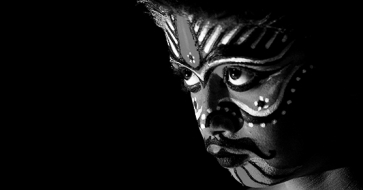
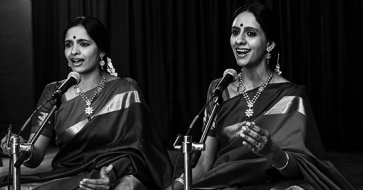
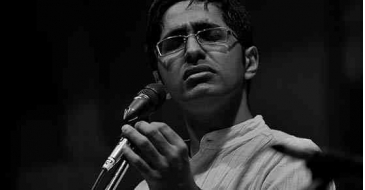
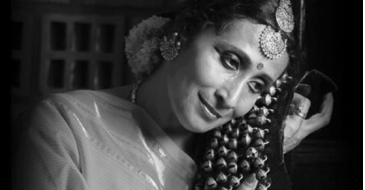
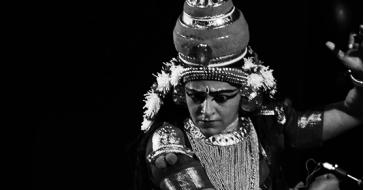
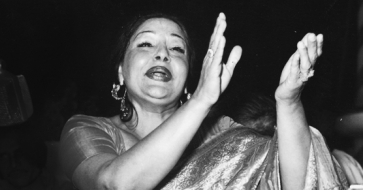
Viswanathan Natarajan
November 25, 2017